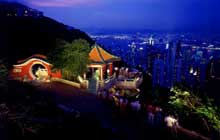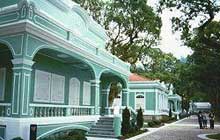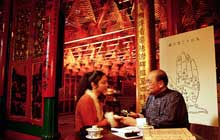Victoria Peak
If you picture Hong Kong as a dragon, with qi or energy coursing through it, then Victoria Peak is the summit of the dragon's spine; and the Peak is unquestionably Hong Kong 's premier tourist site. If you visit in summer you'll no doubt sympathize with Sir Richard MacDonnell, a Governor of Hong Kong in the nineteenth century, who moved his residence there to avoid the tropical torpor down by the harbor. » Read more »
» Read more »Just to the south of Hong Kong lies Macao. This tiny territory of just under thirty square kilometres must be one of the few places in the world where a former colony boasts a higher per capita income than the parent country. Macao was settled while the Portuguese were acting as middlemen for trade between the Chinese and Japanese during the sixteenth century. These days it is internationally known for the casinos, whose revenues now better those of Las Vegas , » Read more »
» Read more »Day One
You will land at Hong Kong 's new international airport. This was Britain 's last infrastructural project before handing over this dynamic commercial hub to China in 1997. Since then, despite fears to the contrary, this financial center of dizzying contemporary architecture, perched on a tiny tropical atoll in the South China Sea , has retained its potency as the major gateway to doing business in China.
After transferring to your beautiful hotel, » Read more »
» Read more »"Of the thirty-six West Lakes east or west, the West Lake in Hangzhou is the best."
As this dictum reveals, China has thirty-six West Lakes – in Beijing, Fuzhou, Guilin, etc. – but none are reputed to be as magnificent as the one in Hangzhou. Originally no more than a shallow inlet, this section of the Qiantong River was dredged and dammed in the eighth century to form the lake that exists today. » Read more »
» Read more »Tea is one of ancient China's many inventions. The English word "tea" is derived from the word te, which hails from the southern port town of Xiamen (Amoy). Although it was only introduced to Europe and America in the seventeenth century, human cultivation of tea plants dates back two thousand years in China. In fact, during the Neo-Daoist revival of the ninth and tenth centuries, tea became an integral part of scholastic life. The preparation and drinking of tea symbolized man's potential for harmony with nature. » Read more »
» Read more »



